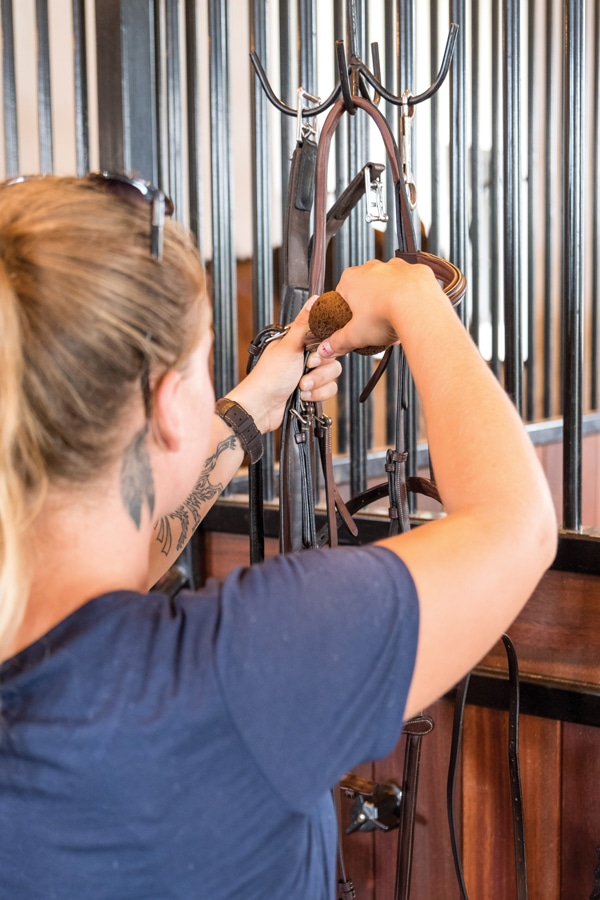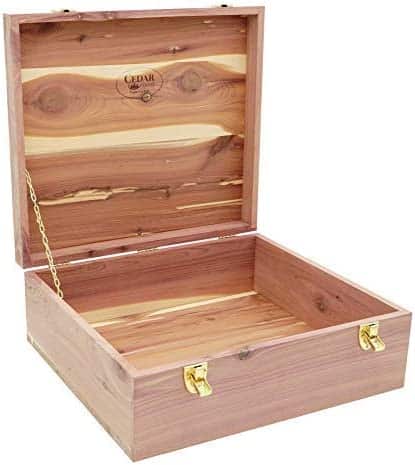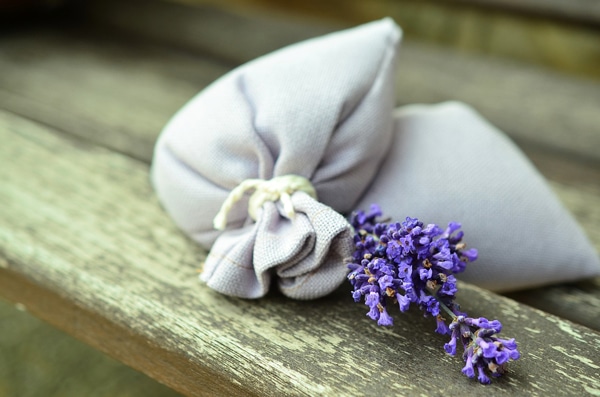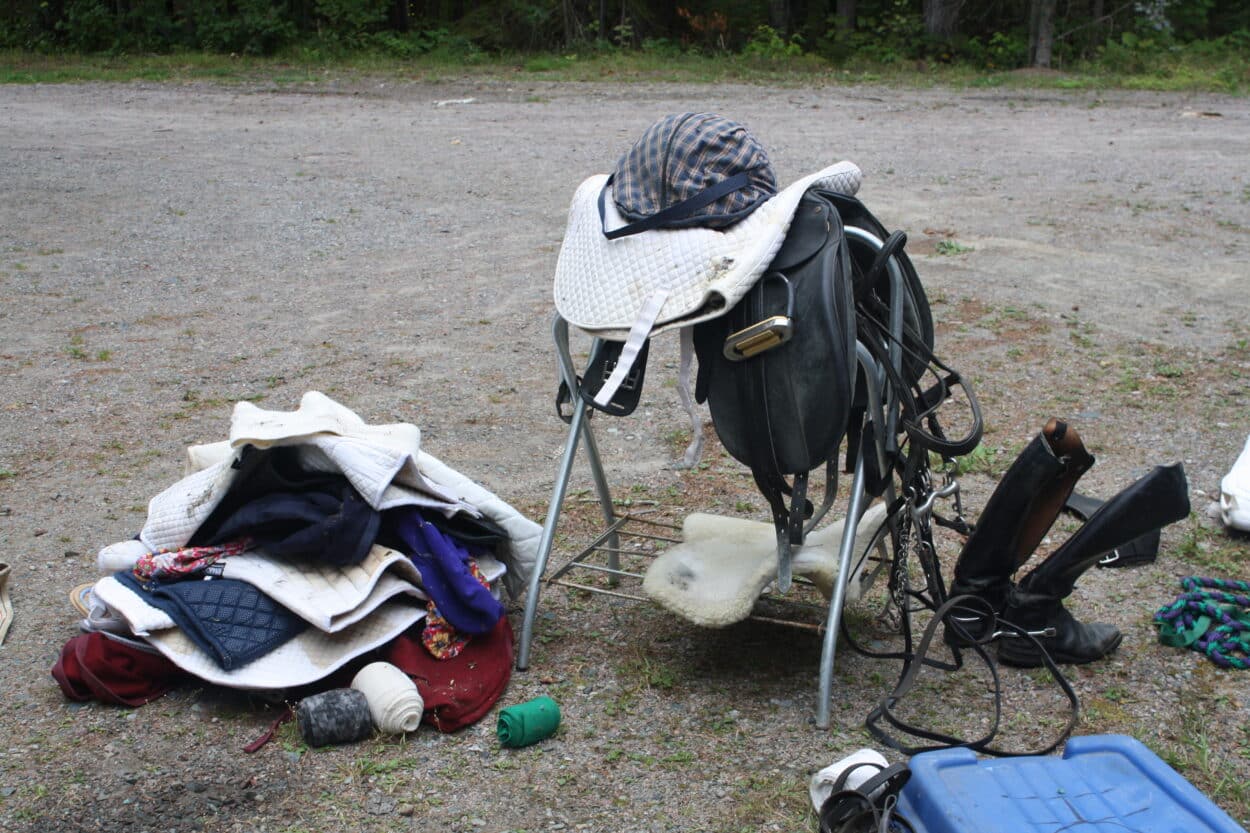Fall marks the end of the competitive season for many riders, making it an excellent time to perform a tack deep-clean, inventory, and safety inspection. This process can be overwhelming without a plan, especially if you’re currently sitting on a daunting mountain of mess that has tumbled from your trailer’s tack room door.
Here are some tips for cleaning and storing your horse’s show tack so you’ll be ready for next year’s competition season before it even starts.
Saddles, Bridles, Bits, and Boots
To deep clean your saddle, begin by rubbing the leather sparingly with warm water to remove dirt and sweat. Dry the leather, then apply saddle soap and finish with a coat of conditioner.
Tack can be conditioned regularly, but to avoid compromising the leather, oiling should only be done two to three times per year. Oiling all your tack in the fall with a quality product like neatsfoot oil will give it extra protection over the winter.

Tack should be conditioned regularly, but to avoid compromising the leather, oil it only two or three times a year. (Jump Media photo)
Avoid over-oiling, but do work in oil with your fingers in places where the leather has begun to curl away from the stitching or is particularly worn. Allow the oil to sit and absorb, and then wipe off any excess.
Use the same method to clean your bridles, but take them apart first. Disassembling the bridle allows you to assess damage caused by the buckles, remove destructive dirt, and oil leather that has become misshapen by use. Now is also the time to have tack repaired or replaced so it does not become a safety issue.
Horse boots with leather straps or patches can be wiped down, cleaned, and oiled in the same way. To prevent synthetic boots or straps from breaking down from sweat and dirt, first clean them with a mild soap applied by toothbrush and then rinse thoroughly. Hair and fluff can be combed out of Velcro straps and fastenings with a fine-toothed metal brush and a darning needle.
Clean your stirrups and the metal screws and buckles on your saddle and bridle with metal cleaner to prevent damage caused by rust. To remove the greenish grunge from your bits, boil them with water and vinegar for at least ten minutes. If stains persist afterwards, they should then come off easily with a toothbrush and toothpaste followed by a thorough rinsing.
Storage Tips:
Climate control is the most important factor when considering how to store your leathers. As a natural product, leather is very sensitive to moisture, heat, light, and cold. Ideally, the conditions in storage areas will be moderate and dry, and there will be no drastic changes in temperature.
If you have a well-ventilated, heated tack room with a door that closes, you might be able to get away with storing leathers there long-term. If your tack room does not fit this description, a dehumidifier can guarantee ideal humidity. As a last option, leathers can be stored at home.
Mould is the biggest problem when storing leathers. Mould occurs when leather breaks down and becomes susceptible to moisture. If left unchecked, mould will cause the stitching that holds leathers together to deteriorate, creating a safety issue. The best way to prevent mould is to stop it before it starts. Oiling the leathers prevents mould from setting in, but if storage conditions are very damp, it can encourage mould to grow.
Avoid storing leathers in air-tight storage containers or plastic coverings that trap the leather’s natural moisture inside, forming condensation. Instead, saddles can be stored on standing racks with padding underneath, or they can be placed in breathable storage boxes, so long as they are sitting on a saddle stand. Opt for custom covers, but as an alternative, a towel or a sheet will suffice. Your saddle can also be stored in a sealed saddle bag with the zip left open an inch or two. Check tack periodically to ensure the leather is breathing.
It’s best to store bridles disassembled, as this will prevent the metal pieces from corroding or cracking the leather during temperature changes. Avoid rolling up, twisting, or otherwise reshaping the leather when storing. Wrap in breathable cloth and place in a ventilated box with shelves to keep everything lying flat.

Pre-scrubbing and vacuuming saddle pads before washing will result in a cleaner pad (and a happier washing machine!) (Charlie Fiset photos)
Blankets, Polos, and Saddle Pads
It’s often enough to do a yearly deep wash of summer sheets, coolers, flysheets, and polos. Follow the care instructions on your blankets’ labels to know whether to hand or machine wash. If you put them in the washing machine, brush them off first and then use a gentle cycle with cold water.

Cedar storage boxes will keep pads and bandages safe and smelling great! (azwoodman.com)
When washing saddle pads — especially your best whites — it’s better to hand-wash first. Before beginning, it’s important to remove as much hair as possible, especially if you finish by machine washing, because hair can damage machines, clog pipes and does not break down in septic tanks. They can be brushed, or you can use a vacuum cleaner if the suction isn’t too strong.
Once the hair is removed, soak the saddle pads and then apply a mild detergent to any stains and let sit overnight. Then scrub out the stains with a brush before placing in the washing machine or rinsing until the detergent is completely removed.
Storage Tips:
Make sure blankets, bandages and pads are completely dry before folding and storing. Fabrics can be kept in garment bags, vacuum-sealed bags, or other plastics, and then placed in a plastic storage container. A cedarwood storage box is another excellent option; cedar discourages bugs and mice and it looks and smells great!

A fragrant sachet made with aromatic plants and spices can help keep mice away. (congerdesign/Pixabay)
Cooler temperatures make mice a problem for most tack rooms, and they sometimes prove impossible to get rid of. You can make your own humane mouse-repellent that can also serve as cute gifts for your friends or boarders. Fill sachets or socks with crushed dried mint, rosemary, and lavender, and/or spices like cinnamon sticks and cloves, or add cotton balls sprinkled with essential oils. Fasten firmly, then place in your tack box, trunk or locker, avoiding positions where the sachet is in direct contact with the stored items.
***
Charlie Fiset is a former show groom who has worked on the FEI circuit in Europe and North America.

